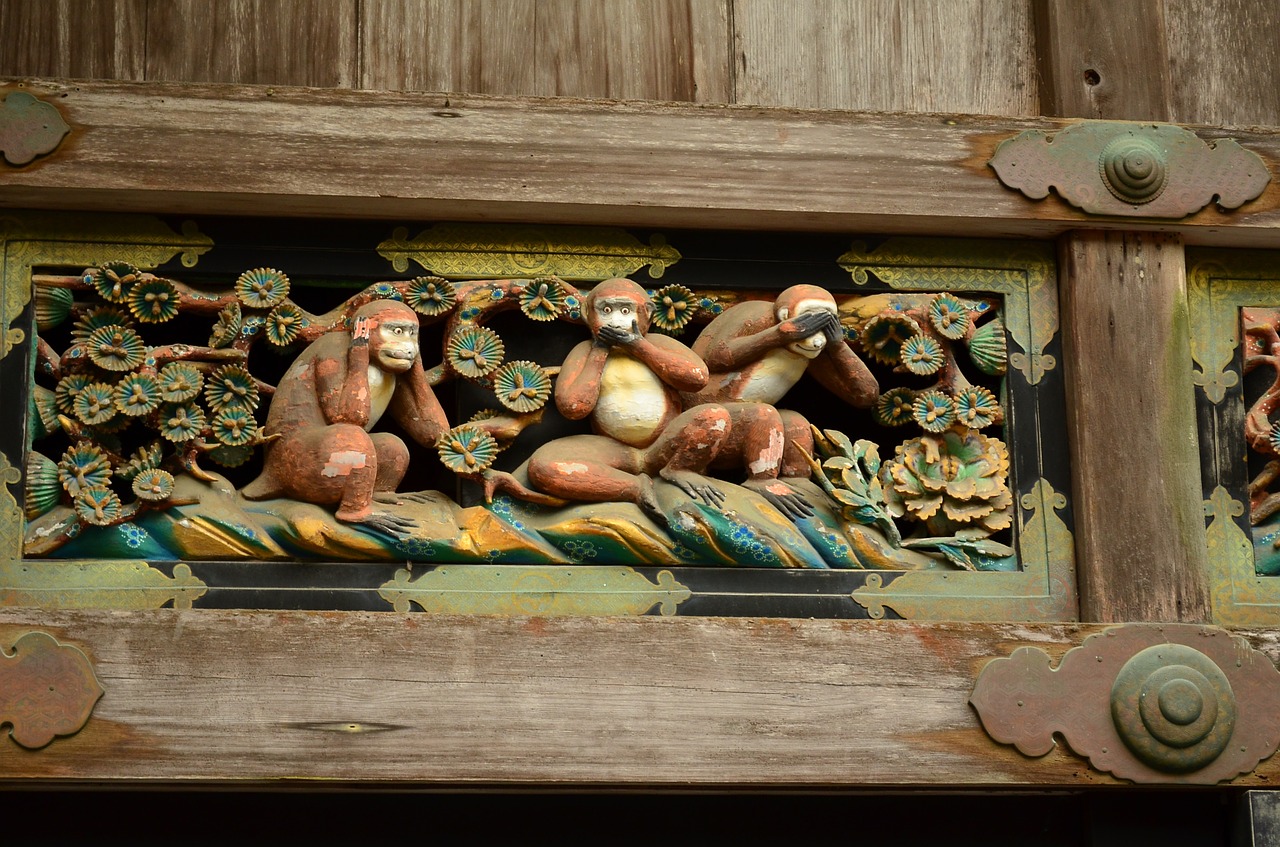Resistance to Reenchantment
As far as invocations go, this had been a disaster.
I’m not going to go into all of the ways I’d fucked up, but I had. The pinnacle of that fuck up
however, was the fire alarm going off. Instead of giving up though, I’d chosen to see the first attempt as some kind of botched practice run, attended to the fire alarm, and started again. There’s a lot to be said for perseverance and not giving up too quickly.
botched practice run, attended to the fire alarm, and started again. There’s a lot to be said for perseverance and not giving up too quickly.
So I’m standing there in my living room, with my less than stellar table of art set up (I’m really no artist), surrounded by various sigils, and rattling through invocations. You know, as you do. Time passes, and I begin to feel a little hopeless – I’m used to getting things in the air much sooner than this – but I carry on.
Then I start to doubt myself and this can be disastrous for a magic user. Maybe I’d messed up too badly? Maybe I’d gotten something wrong? Maybe I’d even offended the spirit I’d been attempting to conjure? There had been a sense of build-up before the fire alarm, so maybe the alarm had put the spirit off somehow?
Refocusing again, I set myself once more to purpose and continued to rattle through the invocations, allowing myself to fall into their rhythm. To pull me up and build with them. In short, I allowed them to put me into a kind of altered state – an ecstatic one in which my body thrummed, my voice soared, and spittle formed on my lips. My vague swaying became a purposeful rocking as I moved with the words.
And somewhere in that, that’s when things began to happen.
There was a sensation of something with weight descending into the scrying bowl before me, then a sense of expectation.
I greeted the spirit in the water and waited for a response.
Nothing.
I had been so certain it had been there, but I was beginning to have serious doubts. Forcing myself to refocus on the water, I let my eyes relax and got into my usual headspace for scrying.
Still nothing.
The doubts began to coalesce and take on a life of their own. Melding together, I found they formed an almost tangible barrier – something against which I could push and that would in turn push me back.
I tried a different tactic and fell back on the physical cues I’d programmed into myself over time with self-hypnosis. I’d done that work for times such as these when the doubts and disbelief weigh heavy but I need to work anyway.
“STOP THAT!”
The voice rang through my head, loud and booming, and the doubts – though still persisting – began to fall away.
Then the surface of the water began to change, appearing to ‘burn over’ with what I can only describe as “purple fire”. With the exception of my level of focus, this was more typical of my scrying sessions. They all seem to start with that burning over of “purple fire”.
Suddenly though, this time, a face rose from the fire, and startled me a little as it turned from side to side (presumably to show me its profile).
Normally when I scry, I don’t get anything like that. Usually I have to hold the bowl in some way and receive images, each one seeming to bubble up from a depth deeper than the shallow bowl I use. Each image is preceded by an icy coldness, the bowl paradoxically switching between colder and warmer despite being held in my hands for the entire time.
This was a far cry from the usual flat images sent though, and somehow clearer despite my working in broad daylight. Moreover, I wasn’t even touching the bowl, when normally I get nothing if I do not.
Regardless, my brain still went into debunk mode.
The mouth began to move, “Why do you do this when you know what is real?”
And thus followed a 30 minute berating session with a spirit in a bowl.
The Question
We talk about reenchanting the world in modern Paganism/Witchcraft a lot, but there is relatively little discussion of the barriers to that re-enchantment. Or indeed, whether that re-enchantment is a case of needing to bring something back, or simply see what has been with us all along.
It’s one thing to advocate for something, but it’s quite another to get down into the weeds, examine strategy, and come up with a plan. The spirit’s question to me was insightful.
 “Why do you do this when you know what is real?”
“Why do you do this when you know what is real?”
I’ve seen and experienced so many things that are considered ‘impossible’. I’ve seen, heard, felt, and been physically moved/scratched/touched by unseen forces. You’d think someone like myself would no longer have any doubts or constant urge to debunk what I experience. You’d think my world already completely re-enchanted.
Yet if there’s one thing I’ve found in around two decades of this kind of thing, it’s that in the cold light of morning, the walls always come back up again. It doesn’t matter how many scratches you’re wearing from whatever you were dealing with, or how many other people witnessed what you did, the walls always come back.
So why does this happen? Why do those walls come up in the harsh morning light and the brain work to convince us that what was lived is not real? After all, that’s pretty rich coming from a brain that functions in a remarkably similar way dreaming as it does while awake.
Introducing the Psychic Censor
The best explanation for this, in my opinion, is the Chaos Magic concept of the “psychic censor”. In Psychonaut, Peter J. Carroll introduces the concept and provides the following description:
”When people are presented with real magical events they somehow manage not to notice. If they are forced to notice something uncontrovertibly magical they may become terrified, nauseated, and ill. The psychic censor shields us from intrusions from other realities. It edits out most telepathic communication, blinds us to prescience, and reduces our ability to register significant coincidences, or recall dreams. The psychic censor is not just put there out of divine malice; ordinary physical life would be impossible without it……The psychic censor on the other hand, is a material thing, which protects the mind from magic and from being overwhelmed by the awesome strangeness of the psychic dimension which appears to us as chaos.”
Liber Null and Psychonaut 162
Now, how many of us have felt that? How many of us have found ourselves pressed up against that barrier and wondering how to bring it down because we know there’s something there seemingly just beyond reach? How many of us have felt it resurrecting itself after an experience?
It can be hard to see the psychic censor as the necessary and protective thing it is. But imagine a world in which it did not exist! Carroll talks about this on the individual level, but imagine it on a wider societal scale. Imagine if everyone had nothing but certainty – it would be a disaster. You would have an entire world full of people either going insane or trying to change reality to fit with their ideas of how it should be.
Which wouldn’t be so much of a problem if we humans could agree on how things are supposed to be, but you know, we can’t.
So we struggle with the censor, and anyone who doesn’t is likely either lying or just plain crazy.
The Censor and Reenchantment
This concept of the psychic censor though, raises a lot of questions about the very idea of re-enchanting the world. After all, at what point has that re-enchantment gone too far (and to what lengths would the censor go to maintain  control)? And yet, it might be argued that we live in a time in which the psychic censor not only exists but is further supported by human-made material distractions and barriers.
control)? And yet, it might be argued that we live in a time in which the psychic censor not only exists but is further supported by human-made material distractions and barriers.
These factors make the matter of reenchantment a far more complex issue than simply reconnecting with the natural world (both seen and unseen). Historically, we humans found enough danger in the natural world to limit our interaction with it. We built our hedges and gathered together for mutual protection, and that is something that is always worth keeping in mind in all the talk of rewilding and reenchantment.
By virtue of seeking to ‘cross the hedge’, the magic user, regardless of ‘flavor’, is the odd duck here. It is also no coincidence that the strongest experiences tend to happen away from the civilized world of man. ‘Consensus reality’ must be maintained, and there’s plenty about human habitation that is distasteful to the Other.
Mapping the Route Past the Censor
According to Carroll, the psychic censor is more active on some levels than on others. He subdivides human consciousness into five parts: unconsciousness, dreaming, awareness, robotic, and gnosis (Carroll 121).
The awareness level – the level of conscious thought and emotion – is given the greatest level of protection by the censor (Carroll 162). Dreams can be magically useful but the censor steals away memory upon waking. On the robotic level, insights and perceptions may be received when performing menial tasks that require little thought, but this time the censor works to steal our perception or memory of them.
What Carroll refers to as the ‘gnosis’ level though, a state described as being quiescent concentration or ecstatic excitement is the least protected by the censor. This gnosis level is not what we do when we engage in most trance work though – Carroll places these as typically lying somewhere between robotic and dreaming states. Gnosis is that which comes when the mind is focused entirely on one thing – that kind of altered state you may have experienced when experiencing so much terror or anger that the entirety of your awareness has narrowed down to a single point.
Sneaking By
So to sneak by, we must work to thwart the censor in a number of ways. We must train ourselves to remember our dreams, making them the first thing we think of and record when we wake up in those spare moments before the material world crashes in and those memories are stolen. Some may even try setting alarms in the middle of the night, or attempt to practice first and second sleep with the aim of moving towards more natural sleep patterns for humans in order to facilitate the incubation of dream.
 Removing phones from one’s bedside is a good move here too – the psychic censor is a material thing, and those first interactions with that symbol of modern materiality is one of the best methods of banishing memories of dream.
Removing phones from one’s bedside is a good move here too – the psychic censor is a material thing, and those first interactions with that symbol of modern materiality is one of the best methods of banishing memories of dream.
On a personal note, I’ve found that the regular practice of the Stele of Jeu/Headless rite from the Greek Magical Papyri is one of the best methods of having richer dreams that are far more easily remembered. It’s probably not a coincidence that the rite is a form of exorcism and makes me wonder if the censor can be temporarily exorcised (or otherwise temporarily manipulated magically). The Headless Rite does involve some Judeo-Christian names, but seeing as it’s apparently “Shadow Work October”, this is the perfect time to finally confront that Judeo-Christian baggage, right?
We can also work to attain a state of gnosis by either inhibitory or ecstatic methods, and this is where the hard work will come in. Don’t be fooled, if you truly wish to reenchant the world, it’s not enough to just go spend more time in nature. Yes, it will increase your chances of coming across something simply by virtue of being in the right environment, but without working on all this other stuff you’re likely going to miss out.
There are numerous ways to attain gnosis, some more socially acceptable and legal than others. Ecstatic means include drumming and dancing, ordeal work, sexual methods, the use of excitatory drugs, forced over-breathing, and other forms of sensory overload. Inhibitory methods include concentration exercises such as image/sound/object concentration, some types of magical trances, drugs of a more hypnotic nature, and sensory deprivation. This is not encouragement, this information is provided in the interest of completeness. It is up to you to investigate the risks and legalities where you live, and make your decisions accordingly.
But the point is that none of this is easy. Reenchanting our worlds in so far as we feel comfortable is going to take far more work and experimentation than simply walking in the woods and leaving offerings (though none of that is useless either).There are also likely some very real dangers to reenchantment too – not the least insanity. And let’s face it, there’s a lot of the (currently?) Unseen that is just not that nice
As with everything pertaining to magic though, the real question is simple: how badly do you want it and what are you prepared to sacrifice?

